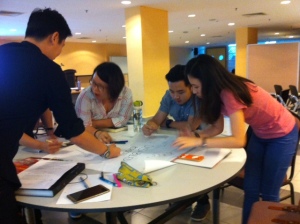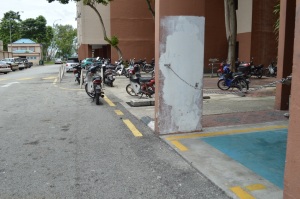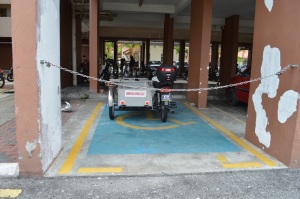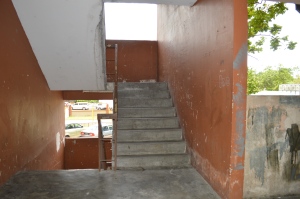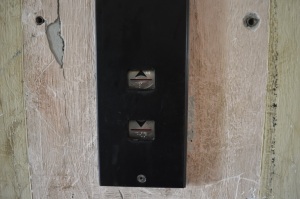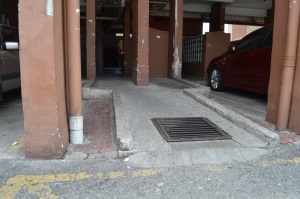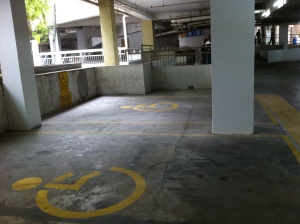In the light of recent disasters such as flooding, what are the preparation our nation and ASEAN countries have done to meet on this challenge?
LINK from UN ESCAP
“When I left the National Council for Persons with Disabilities Act in 2012 the last thing I did was present a paper on disaster preparation without much knowledge and thin research. So I am just sharing what I has sent then in this blog post”
>>>
Disaster Preparation, Rescue and Relief for Disabled Persons in Malaysia
Universal Design and Built Environment Committee,
National Council of Persons with Disabilities Act 2008
9th August 2012 Paper Presentation
Executive Summary
In Malaysia, the proposal is to form a working committee to start working on the issue of Disaster Preparation, Rescue and Relief for Disabled Persons in Malaysia under the National Council of Persons with Disabilities Act 2008. All the Government ministries and agencies, rescue volunteer organisations and disabled persons/organisations should address this issue.
The Working Committee could address the following solutions:
- Training for Rescue Teams: Bomba, PDRM, Volunteer Services, Hospitals etc
- Guide for Residents and Rescue Teams
- Information on Social Media, Television and Radio
- Research and Development – Portable Toilet for Disabled Persons, Rescue Aparatus
Background Study
Disaster is defined as a “calamitous event, especially one occurring suddenly and causing great loss of life, damage, or hardship, as a flood, airplane crash, or business failure” (dictionary.com). In Malaysia, one type of natural disaster, i.e. floods has been common due to the seasonal heavy rainfall. Others (earthquakes, tsunamis, forest fires) are less common but due to rapid physical development certain natural disasters (landslides, floods) are becoming common in parts of the country.
Development is correlated with population growth across the country, but especially in the cities populations are expected to be growing rapidly. Disasters in the built environment include both natural and anthropogenic origins. Anthropogenic (or man-made) disasters in the built environment could stem from fires started by arsonists or by accidents, or the detonation of bombs. This means that disaster prevention and management must take into account the socioeconomic and geographical factors that will influence how resources (food, aid, manpower etc.) are allocated during disasters.
Certain agencies or groups are more prepared or have more experience in dealing with certain aspects of disaster prevention and emergency management than others and therefore it is important to identify the strengths of each agency/ group when forming a task force and/or choosing which one will be the head.
It is also important to learn from other countries that have already set up their task force / council so that we adapt and/ or innovate on their solutions.
In the US, more than one agency is responsible for providing resources to deal with disasters and the needs for disaster management always change. For example, the terrorist attacks on the World Trade Center, two men carried a woman who uses a wheelchair down 68 flights to safety moments before the tower collapsed. This means new situations provide for new experiences and lessons and thus interests on to manage disaster and emergencies are renewed (http://www.access-board.gov/evac.htm).
Also, resources on Disaster Preparedness and Emergency Management are available from the 1. American Red Cross, 2. the Federal Emergency Management Agency (FEMA), 3. the National Center on Emergency Planning for People with Disabilities, and 4. the National Organization on Disability (NOD).
In order to integrate both government and non-government groups, a task force (initiated by the NOD) called the Task Force on Emergency Preparedness and People with Disabilities, was formed by having representatives from 1. Disability groups, 2. Emergency planning and response organizations, and 4. Various government agencies.
At the government level, the Interagency Coordinating Council (ICC) on Emergency Preparedness and Individuals with Disabilities (established by Executive Order in 2004), is responsible for implementing policies to address the safety and security needs of people with disabilities in emergency situations. The Council is headed by the Director of Homeland Secretary and is comprised of representatives from other Federal departments, including the Department of Labor (DOL).
In Ontario, Canada, Emergency Preparedness Guide for People with Disabilities and/or Special Needs was prepared by the Government of Ontario’s Emergency Management Ontario in partnership with the Accessibility Directorate of Ontario. In the guide, users are advised that “Emergencies can occur suddenly and without any advance warning. Although Ontario has effective emergency management legislation and programs, individuals and families play a vital role in preparing for times of crisis when emergency services and other government resources may be strained. It is important that individuals and families prepare to be self-reliant for at least three (3) days immediately after or during an emergency.” The guide makes specific categories for the following:
- Mobility
- Vision
- Hearing
- Non-Visible Disabilities
- Seniors with Special Needs
- Highrise Safety
- Travel Considerations
Concerned about the state of our country’s Disaster Preparation, Rescue and Relief for Disabled Persons, Dr. Naziaty and the Committee for Universal Design and Built Environment solicited information from individuals regarding the above matter late July 2012 via email. We asked the following questions (6 items).
1) Which government agencies/ministry will be the main authority to create the policy for this? Ministry of Defence? If yes, then of course, they will have to work with the state government, local authorities and Min of Women, Family and Community Development (i.e. via JKM). Do you agree? If yes or no, please comment. What other ministries would be crucial?
2) What are the best practices that you have witnessed so far in Malaysia or overseas? Please give some contacts or websites of best practices in government agencies? NGOs? Community efforts? Individuals?
3) What is the role of the Red Crescent, St John’s Ambulances, Mercy etc on this? Please suggest what role they should take.
4) I assume that there are 3 stages to this: Preparation, Rescue and Relief, so I will work with you guys on these three different stages.
5) There are many natural disasters, i.e. floods, earthquakes etc? Shall we include all of them. Please name more of the natural disasters and how we should tackle them.
6) I will also consult DBKL and other local authorities on this. Hopefully there will be time. Do you have any contacts? Can you give me any contacts that would be helpful for this paper?
The full responses are given in Appendix 1.
Appendix 1: Responses from individuals.
- Bathmavathi Krishnan (NGO representative):
1) Am not sure Bomba & Civil Defence comes under which Ministry
2) Yes, agree they have to work with Min of Women (who also look after vulnerable groups – children, elderly & OKU)
3) There are so many, many relief orgs in Malaysia
3) Role of these orgs Red Crescent, Mercy etc..can be obtained from their websites (or brochures)
4) Yes, agreed.. Prep, Rescue, Relief…sometimes also may involve resettlement… eg tsunami, earthquake survivor victims who have lost families, source of livelihood etc.
5) Yes.. include all form of disasters.. fire, floods, earthquake, landslide, building collapse, major industrial explosions/blasts, victims of road accidents (there are cases when extricating survivors .. more damage caused, resulting in physical impairment)
- Peter Tan (Digital Awakening / DET Trainer)
1) JPOKU since this department was specifically set up to manage disabled people’s affairs. MOH, Ministry of Home Affairs (PDRM), Ministry of Housing and Local Government (Bomba) and other agencies tasked with flood/disaster relief work should be involved.
2) University of Kansas has quite a comprehensive plan on this.
http://www.nobodyleftbehind2.org/resources/
Dr. Glen White could be a reference.
5) Yes, but not only limited to natural disasters but emergencies like fires, highrise fires and building collapse.
iii. Zashnain Zainal (activist / individual who volunteers in flooding situation such as the Bangkok floods in 2011)
1) KPWKM should be the main authority.
2) As mentioned during our meeting, I suggested FROC (Thailand’s flood relief operational center) – I volunteered my services there during the 2011 flood.
3) There should be a council or a working group specializing in Disaster Situations for Disabled People and People living with Disabilities. All that you have mentioned should be committed into this platform of action and coordination.
4) Kindly add Monitoring and Evaluation as the 4th component.
5) Should include all natural and man-made disasters (for example, a horrific explosion of chemical disaster)
6) You may tap into my skills and experiences. Though due to the timing and that I am in Thailand at the moment, it may prove to be challenging, but not impossible.
iv: Dalilah Bee Abdullah @ Ch’ng Gaik Bee (DBKL Officer at Unit Inovasi dan Piawaian)
Pasukan Mencari dan Menyelamat Khas Malaysia
Pasukan Mencari dan Menyelamat Khas Malaysia atau SMART (Special Malaysia Disaster Assistance and Rescue Team) merupakan sebuah pasukan khas mencari dan menyelamat yang ditubuhkan di bawah Majlis Keselamatan Negara Malaysia yang berdasarkan kelulusan Jemaah Menteri pada 18 Mei 1994.
Susulan daripada tragedi keruntuhan pangsapuri Highland Towers, Ulu Kelang pada 11 Disember 1993, Jawatankuasa Kabinet yang bersidang 21 Disember 1993 telah meluluskan penubuhan Pasukan SMART di bawah pengurusan Pejabat Majlis Keselamatan Negara; Pasukan SMART ini dianggotai oleh pegawai dan anggota daripada jabatan kerajaan yang berkaitan seperti Jabatan Bomba dan Penyelamat Malaysia (JPBM), Polis Diraja Malaysia (PDRM) danAngkatan Tentera Malaysia (ATM).
Di antara misi-misi yang pernah disertai termasuklah:-
- Misi Mencari Dan Menyelamat Mangsa Tsunami di Aceh, Indonesia pada Disember 2004
- Misi Mencari Dan Menyelamat Mangsa Gempa Bumi Di Muzafarabad, Pakistan pada 2005
- Misi Mencari Dan Menyelamat Mangsa Tanah Runtuh Di Leyte, Filipina pada 2006
- Misi Mencari Dan Menyelamat Mangsa Gua Tanah Runtuh Perak Cave Templer, Perak Thong pada 12 Januari 2009
- Misi Mencari Dan Menyelamat Mangsa Bangunan Runtuh Jaya Supermarket Seksyen 14, Petaling Jaya Pada 28 Mei 2009
- Anita Ahmad (UNDP Officer)
- I believe the best agency to work with MWFCD on this is not Ministry of Defense but the Ministry of Home Affairs (KDN) as the Civil Defense Agency (which takes care of emergencies during disaster) http://www.civildefence.gov.my/v2/profil-jabatan-2/navigations-4/pengurusan-bencana-operasiis under them. Also, the police should be involved and the police is also under KDN. You may also want to consider the National Security Council (NSC) under the PM’s Dept. They too have a section which is suppose to oversee disasters. Under the NSC, is also the Special Malaysia Disaster Assistance and Rescue Team (SMART) which is supposed to do search and rescue work. You also need the Bomba on board.
- NGOs like Mercy Malaysia usually assist in delivering essential items needed during emergencies depending on their assessment of the situation. The items vary from medical goods, water, sanitation items etc. They key thing for them would be to ensure that they include PWDs as beneficiaries. Not sure if they do that now. In some circumstances, they will assist in rebuilding the medical capacity and/or infrastructure and this has included rehabilitation centers for the disabled – if again, their assessment finds this is needed in the said country. They also bring along volunteer doctors etc on missions for basic medical health care and emergency operations. The best is to raise that PWDs should always be included as Red Crescents/Mercy/St John’s list of beneficiaries and share with them what you think PWDs needs are during emergencies.
- For the full cycle of disaster management see http://mercy.org.my/0910060459%c2%bbOur_Approach.aspx
- Other disasters (natural or otherwise) relevant to Malaysia: landslides and tsunamis (which is not the same as earthquake)
Agencies and Organisations involved:
- Government Outfits / Non-government interest groups
- Ministry of Defense (Military)
- Ministry of Home Affairs (Police, RELA, Bomba)
- Ministry of Women Family and Community (via JKM/JPOKU)
- Ministry of Health (Hospitals & Ambulance)
- St Johns Ambulance, MERCY, Red Crescent
- State Government
- Local Authority (e.g. DBKL)
- Legislations/ guidelines
- Akta OKU 2008
- Malaysian Standards
- Housing Act




